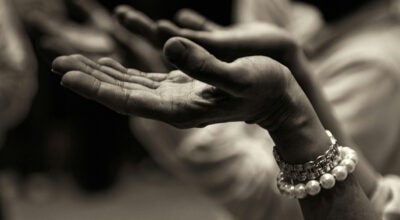Pay gap, cost of child care create obstacles
Published 8:08 pm Monday, May 28, 2018
A new report reinforces what many Mississippi residents already know, but legislators don’t often discuss: affordable child care is vital to the state economy.
Parents can’t work outside the home if they can’t find a safe place for their babies and young children to stay and learn. But high-quality child care can cost thousands of dollars a year, and that forces many families to calculate whether it’s even worthwhile for someone to take a relatively low-paying job if a big chunk of income is going to be eaten up by child care. It’s an issue that particularly affects single mothers.
The report , “Boosting Economic Growth in Mississippi through Employment Equity,” was released last week by the Mississippi Low-Income Child Care Initiative and a national group called PolicyLink, which has offices in New York, Washington, and Oakland, California.
“If full employment was achieved across all gender and racial groups, Mississippi’s economy could be $2.5 billion stronger each year,” the report says. “Investing in women and in critical support systems for Mississippi’s workforce will disrupt Mississippi’s current pattern of economic exclusion and place the state on a course to greater prosperity for all.”
Like many reports from interest groups, this one comes with a point of view. This one is from liberal-leaning groups, which means it might not receive deep consideration from many conservative lawmakers who dominate the state House and Senate.
For the past several months, Republican Gov. Phil Bryant has noted that Mississippi is enjoying healthy employment numbers. The state’s unemployment rate was 4.6 percent in April. That was only a small increase from 4.5 percent March, which tied for the lowest level since current employment surveys started in 1976. The unemployment rate in April 2017 was 5.3 percent.
The report from the child care initiative and PolicyLink acknowledges that Mississippi is experiencing low unemployment, but it notes that more than 20 percent of Mississippi women live in poverty – the highest rate in the U.S.
“Women of color continue to be overrepresented in low-wage work, and black workers continue to experience higher unemployment rates, even when they have higher educational attainment,” the report says.
It also notes that 40 percent of women of color have low-wage jobs and are considered “working poor,” while 13 percent of white men are in that category.
The report says that “only a small fraction” of working-poor families who are eligible for child care financial assistance are receiving it. It also recommends that Mississippi policymakers take steps to eliminate pay disparities between women and men. It says that black women earn 57 cents and Latina women earn 54 cents for every dollar earned by a white man.
There was a bit of discussion during the 2018 legislative session about addressing the pay gap for men and women, but no legislation passed. House Bill 1241 was originally written to ban local governments from creating their own employment laws, such as setting a higher local minimum wage.
Democratic Rep. Alyce Clarke of Jackson persuaded the House to insert an equal pay requirement. However, there was a dispute over an amendment by another lawmaker, and that delayed a vote on the bill. Several days later, Republican Rep. Mark Baker of Brandon persuaded the House to revise Clarke’s equal pay proposal and pass the bill. He said he was trying to help Clarke’s cause. The bill eventually died in the Senate.
The report says the state economy would benefit from eliminating the gender pay gap: “If employed women in Mississippi were paid the same as comparable men, their poverty rate would be reduced by half and poverty among employed single mothers would drop by about one-third.”
Emily Wagster Pettus has covered Mississippi government and politics since 1994. Follow her on Twitter at EWagsterPettus.





